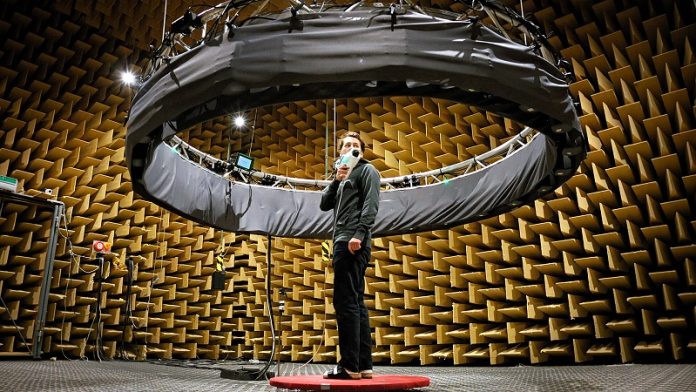
Electric cars are known for being much quieter than traditional vehicles, which is great for reducing noise pollution.
But a new study from Chalmers University of Technology in Sweden has found that the warning sounds electric cars make at low speeds can be difficult for people to hear and locate — especially when several similar vehicles are moving around at the same time.
As electric and hybrid cars become more common, these warning sounds, known as AVAS (Acoustic Vehicle Alerting Systems), are meant to keep pedestrians and cyclists safe by alerting them to a nearby car.
International rules require these vehicles to make sounds when traveling at low speeds — under 20 km/h in places like Europe, China, and Japan, and under 30 km/h in the United States.
The researchers tested three common AVAS sounds in their soundproof lab using 52 volunteers. Participants were placed in a circular room surrounded by 24 speakers.
The team played recordings of electric vehicle sounds and asked people to quickly point out where the sound was coming from.
They also added quiet background noise from a typical carpark to make the test more realistic. One of the signals used just two tones, another used a mix of tones, and the third was a general noise sound. They also compared these to the sound of a regular petrol engine.
The result? The electric vehicle signals were much harder to locate than the sound of a traditional engine. One of the electric sounds, especially when played from multiple “cars” at once, left most people confused — they couldn’t tell where the sound was coming from or how many cars were involved.
The problem lies in how the sounds are designed. Car manufacturers have some freedom in creating their AVAS signals, as long as they meet detection standards. But these signals are often tested in quiet conditions — unlike the real world, where noise comes from all directions. That makes it even harder for people to figure out where a car is, or if more than one is approaching.
Interestingly, people found the sound of a traditional engine easiest to locate. According to the researchers, this is likely because engine sounds are made up of short bursts across many different frequencies, and we’re already used to hearing them in daily life.
The study suggests that the current approach to electric vehicle warning sounds may need a rethink. Signals need to be not just detectable, but also easy to locate.
The researchers now plan to study how these warning sounds affect people emotionally and what changes might make them safer and more effective in everyday traffic situations.
Source: Chalmers University of Technology.



